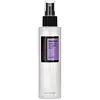What's inside
What's inside
 Key Ingredients
Key Ingredients

 Benefits
Benefits

 Concerns
Concerns

 Ingredients Side-by-side
Ingredients Side-by-side

Water
Skin ConditioningButylene Glycol
HumectantGlycerin
HumectantTrehalose
HumectantGlycyrrhiza Glabra Root Extract
BleachingHydrolyzed Collagen
EmollientPolyacrylamide
Hydrolyzed Hyaluronic Acid
HumectantPhenoxyethanol
PreservativeC13-14 Isoparaffin
EmollientLaureth-7
EmulsifyingChlorphenesin
AntimicrobialTriethylene Glycol
MaskingSodium Lauroyl Lactylate
EmulsifyingPhytosphingosine
Skin ConditioningCeramide NP
Skin ConditioningCeramide AP
Skin ConditioningCholesterol
EmollientCarbomer
Emulsion StabilisingXanthan Gum
EmulsifyingCeramide EOP
Skin ConditioningWater, Butylene Glycol, Glycerin, Trehalose, Glycyrrhiza Glabra Root Extract, Hydrolyzed Collagen, Polyacrylamide, Hydrolyzed Hyaluronic Acid, Phenoxyethanol, C13-14 Isoparaffin, Laureth-7, Chlorphenesin, Triethylene Glycol, Sodium Lauroyl Lactylate, Phytosphingosine, Ceramide NP, Ceramide AP, Cholesterol, Carbomer, Xanthan Gum, Ceramide EOP
 Reviews
Reviews

Ingredients Explained
These ingredients are found in both products.
Ingredients higher up in an ingredient list are typically present in a larger amount.
Butylene Glycol (or BG) is used within cosmetic products for a few different reasons:
Overall, Butylene Glycol is a safe and well-rounded ingredient that works well with other ingredients.
Though this ingredient works well with most skin types, some people with sensitive skin may experience a reaction such as allergic rashes, closed comedones, or itchiness.
Learn more about Butylene GlycolWater. It's the most common cosmetic ingredient of all. You'll usually see it at the top of ingredient lists, meaning that it makes up the largest part of the product.
So why is it so popular? Water most often acts as a solvent - this means that it helps dissolve other ingredients into the formulation.
You'll also recognize water as that liquid we all need to stay alive. If you see this, drink a glass of water. Stay hydrated!
Learn more about Water